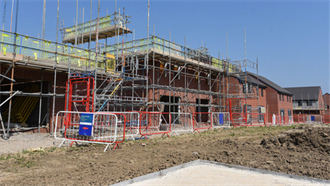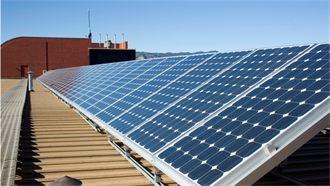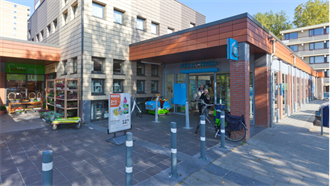After a slump in Q1 transactions, buyers and sellers are still looking for direction amid signs that interest rates in Europe are set to rise further in the short term, writes Tom Leahy, head of EMEA Real Estate Research at MSCI.
European property transaction volumes in Q1 2023 were at an 11-year low. The rapid end of the low-rate cycle has had a chilling effect on deal flow as price discovery becomes much more difficult and buyers and sellers wait for a more certain outlook before committing to the market. Some of the ructions in the debt markets caused by the collapse of several well-known banking institutions, albeit concentrated in the US, also provide an extra hurdle for investors to clear before they move back into the market with confidence.
After a period of such tumult it is no wonder that European property investment volumes have fallen quite as sharply as they have. The slowdown in dealmaking is on a par with that recorded during the onset of the Global Financial Crisis (GFC). Q1 transaction volumes were down 62% in comparison with the same period 12 months ago and the quarterly total of €37.4 bn is the lowest since Q3 2012. The changes are also reflected in MSCI’s valuation-based datasets.
The MSCI European Quarterly Property Index posted its worst-ever quarterly return at the end of 2022, with all property total returns at -6.7%, below the -6.4% recorded in December 2008. The negative outturn was driven by a fall in capital values, with yields having to adjust outwards because of the pressure exerted by rising rates and higher cost of capital.
Office trends sink to all-time low
The uncertainty in the capital markets is augmented by structural changes in the built environment, particularly the role of offices post-pandemic. The sector is having to adapt to two distinct but complementary trends: the post-Covid shift to hybrid working, which now seems likely to structurally reduce the amount of office space; and the drive to decarbonise property portfolios, as many occupiers and owners push towards their stated carbon reduction and net-zero targets. Therefore, a consensus view is emerging that occupiers will want less space, but that space will be better quality to attract workers into the office and to drive energy efficiency.
This hypothesis is having a tangible effect on the investment market as fewer offices traded in the first quarter than in any other quarter in history (MSCI’s European deal data starts in January 2007). Office buyers are focusing on quality and future-proofing their portfolios, which means a narrower slice of the market is trading.
Despite the sharp slowdown in transactions, the average price paid per square metre for European offices actually doubled in Q1’23 versus Q4’22. The reason for this? Those assets that do trade are better quality than the average and naturally will sell at higher prices. Supporting this, the data shows 58% of all European office trades by volume in Q1 were in London and Paris, Europe’s two most liquid property markets.
Data from MSCI’s Capital Liquidity Scores shows that during the GFC markets like London and Paris maintained liquidity better than anywhere else in Europe, and it looks like the same trend is repeating itself. Buyers gravitate towards larger, more liquid property markets at times of distress. This data also reveals a substantial gap between the sale price of office buildings in London and Paris that have energy efficiency ratings from the likes of BREEAM, LEED and HQE and those that do not. It is true these buildings are likely to be newer and therefore command higher prices and the hedonic analysis does control for some of these qualitative factors, but the growing gap illustrates the divide between the ‘haves’ and the ‘have-nots’ in the office market.
It should be noted, though, that these buildings still make up a minority of CBD and suburban office trades across Europe and plenty of buildings are selling without adhering to these criteria. Some of these will likely be refurbished and brought up to market standard, but others may face the growing risk of obsolescence, which has already led to a large loss of value in parts of the retail sector.
Capital flows slow down
A feature of this period of dislocation is the sharp slowdown in acquisitions by non-European headquartered buyers. This is particularly true of US-based players: Q1 acquisitions by US-based equity funds were down 68% YOY, and from US-based investment managers they were down 84% YOY. These players tend to be oriented towards the value-add and opportunistic end of the risk spectrum and may be waiting for such openings to arise before recommitting to the market (see section below on distress).
Notably, the first quarter saw an increase in Asian-headquartered capital moving into London offices, mirroring the trend seen during other periods of uncertainty such as in 2016 and 2017 post the UK’s vote to leave the EU. Q1’s largest purchase was CDL’s purchase of the St Katherine’s Dock portfolio from Blackstone for £395 mln (€447.6 mln). CDL stated in its press release that the market uncertainty was an incentive to make its first London acquisition since 2018.
Other deals involving Asian buyers have since completed, including Mitsui Fudosan’s purchase of the Sancroft St Pauls building from troubled Chinese developer Shimao Group for €359 mln (£315 mln). Japan-based Mitsui bought the recently refurbished building in a joint venture agreement with UK developer, Greycoat. Greycoat had previously put the building under offer in another JV with Goldman Sachs, but the US bank pulled out of the deal in January. The May 2023 sale price represents a 15% discount on a price of £370 mln reportedly agreed by Goldman Sachs and Greycoat in July 2022, which illustrates how the transaction market has shifted in the intervening time.
Distressed sales still rare
One of the shorter-term consequences of rising interest rates and the rapid correction in asset prices is the possibility of a spike in distressed sales. As yet, the data shows distressed sales remain comparatively rare, with such deals equating to just 0.5% of all Q1 acquisitions.
However, some assets have come to market through a pseudo-distress process: for example, shopping centre owner Unibail-Rodamco-Westfield is under pressure to reduce net debt levels and has disposed of €3.3 bn worth of assets since the start of 2022. While the share prices of a number of Swedish listed property investors are down substantially over this same period because of their indebtedness and exposure to floating rate, short-duration debt.
As such, a number of these Swedish players are looking to sell assets to pay down their debt: Corem sold a 47-property portfolio of industrial assets to Blackstone in April and another 17-property industrial portfolio to NREP in February. SBB, meanwhile, has sold a 49% share in a portfolio of educational properties across the Nordic region to Brookfield for close to €2 bn.
For non-listed owners, any pain is most likely to be felt in the retail sector as values were already on the slide prior to the current period of dislocation. However, for other asset classes and especially industrial, where rising yields have caused a sharp correction in capital values, a healthy occupier market is a major bonus.
City-level data from MSCI’s European Quarterly Property Index shows industrial rents were still growing at the end of Q4 across every city covered by the index. This, plus the correction in asset prices, could tempt buyers back into the sector and limit scope for distress despite the upheaval in capital markets.
Outlook: where will rates settle?
Eurozone inflation may have peaked in November 2022, but the April outturn of 7.0% was slightly above March’s 6.9% and this, plus a strong labour market and hawkish noises from the European Central Bank, means interest rates are likely to keep rising in the short term.
But for property, the question may not be how high do rates go in 2023, but where will they settle in the medium-to-long term, which will dictate the shape of market activity through the next cycle. Property was a major beneficiary of the low rate, low return environment, attracting huge volumes of capital as investors searched for real returns: in effect acting as a bond substitute. But interest rates and bond yields will likely settle at higher rates than during the last cycle and this means property may have to serve a different purpose when considered in a multi-asset context.


































